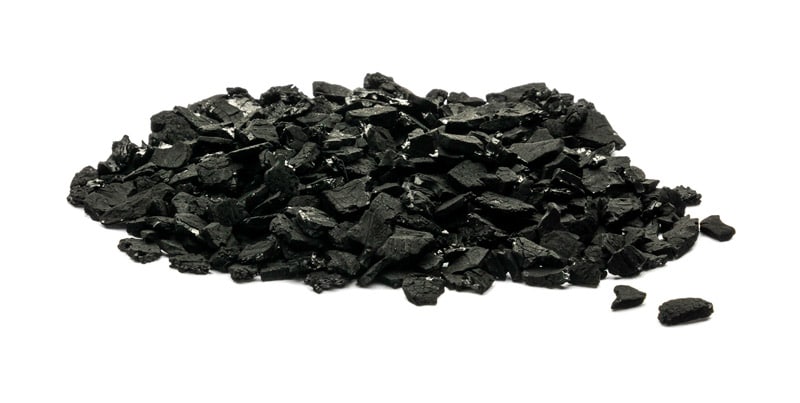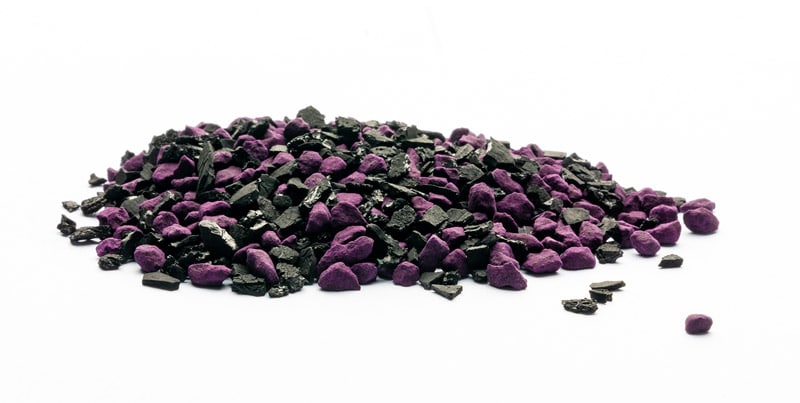Air Pollutants
Search for your pollutant, contaminant or concern for a product
Indole
Indole is an aromatic heterocyclic organic compound. It has a bicyclic structure, consisting of a six-membered benzene ring fused to a five-membered nitrogen-containing pyrrole ring. Indole is a popular component of fragrances and the precursor to many pharmaceuticals. Compounds that contain an indole ring are called indoles. The indolic amino acid tryptophan is the precursor of the neurotransmitter serotonin.
Media Solution
Iodine
Iodine is a chemical element with the symbol I and atomic number 53. The name is pronounced ![]() /ˈaɪ.ɵdaɪn/ eye-o-dyne, /ˈaɪ.ɵdɨn/ eye-o-dÉ™n, or /ˈaɪ.ɵdiËn/ eye-o-deen in both American[2] and British[3] English.[4] The name is from Greek ἰοειδής ioeidÄ“s, meaning violet or purple, due to the color of elemental iodine vapor.[5]
/ˈaɪ.ɵdaɪn/ eye-o-dyne, /ˈaɪ.ɵdɨn/ eye-o-dÉ™n, or /ˈaɪ.ɵdiËn/ eye-o-deen in both American[2] and British[3] English.[4] The name is from Greek ἰοειδής ioeidÄ“s, meaning violet or purple, due to the color of elemental iodine vapor.[5]
Iodine and its compounds are primarily used in nutrition, and industrially in the production of acetic acid and certain polymers. Iodine’s relatively high atomic number, low toxicity, and ease of attachment to organic compounds have made it a part of many X-ray contrast materials in modern medicine. Iodine has only one stable isotope. A number of iodine radioisotopes are also used in medical applications.
Iodine is found on Earth mainly as the highly water-soluble iodide I–, which concentrates it in oceans and brine pools. Like the other halogens, free iodine occurs mainly as a diatomic molecule I2, and then only momentarily after being oxidized from iodide by an oxidant like free oxygen. In the universe and on Earth, iodine’s high atomic number makes it a relatively rare element. However, its presence in ocean water has given it a role in biology. It is the heaviest essential element utilized widely by life in biological functions (only tungsten, employed in enzymes by a few species of bacteria, is heavier). Iodine’s rarity in many soils, due to initial low abundance as a crust-element, and also leaching of soluble iodide by rainwater, has led to many deficiency problems in land animals and inland human populations. Iodine deficiency affects about two billion people and is the leading preventable cause of intellectual disabilities.[6]
Iodine is required by higher animals, which use it to synthesize thyroid hormones, which contain the element. Because of this function, radioisotopes of iodine are concentrated in the thyroid gland along with nonradioactive iodine. The radioisotope iodine-131, which has a high fission product yield, concentrates in the thyroid, and is one of the most carcinogenic of nuclear fission products.
Media Solution
Iodoform
Iodoform is the organoiodine compound with the formula CHI3. A pale yellow, crystalline, volatile substance, it has a penetrating odor (in older chemistry texts, the smell is sometimes referred to as the smell of hospitals) and, analogous to chloroform, sweetish taste. It is occasionally used as a disinfectant. It is sometimes also referred to as carbon triiodide (which is not strictly correct, as this compound also contains hydrogen) or methyl triiodide (which is somewhat ambiguous as that name could also refer to the methylated triiodide ion, CH3I3).
Media Solution
Irritants
Irritation or exacerbation, in biology and physiology, is a state of inflammation or painful reaction to allergy or cell-lining damage. A stimulus or agent which induces the state of irritation is an irritant. Irritants are typically thought of as chemical agents (for example phenol and capsaicin) but mechanical, thermal (heat), and radiative stimuli (for example ultraviolet light or ionising radiations) can also be irritants. Irritation also has non-clinical usages referring to bothersome physical or psychological pain or discomfort.
Chronic irritation is a medical term signifying that afflictive health conditions have been present for a while. There are many disorders that can cause chronic irritation, the majority involves the skin, vagina, eyes and lungs.
Media Solution
Isophorone
Isophorone is an α,β-Unsaturated cyclic ketone, a colorless to yellowish liquid with characteristic smell, that is used as a solvent and as an intermediate in organic synthesis. Isophorone also occurs naturally in cranberries.[2]
Media Solution
Isoprene
Isoprene (short for isoterpene), or 2-methyl-1,3-butadiene, is a common organic compound with the formula CH2=C(CH3)CH=CH2. Under standard conditions it is a colorless liquid. However, this compound is highly volatile because of its low boiling point.
Isoprene (C5H8) is the monomer of natural rubber and also a common structure motif to an immense variety of other naturally occurring compounds, collectively termed the isoprenoids. Molecular formula of isoprenoids are multiples of isoprene in the form of (C5H8)n, and this is termed the isoprene rule. The functional isoprene units in biological systems are dimethylallyl diphosphate (DMADP) and its isomer isopentenyl diphosphate (IDP).
The singular terms “isoprene†and “terpene†are synonymous whereas the plurals “isoprenes†or “terpenes†refer to terpenoids (isoprenoids).
Media Solution
Isopropyl Acetate
Isopropyl acetate is an ester, an organic compound which is the product of esterification of acetic acid and isopropanol. It is a clear, colorless liquid with a characteristic fruity odor.[1]
Isopropyl acetate is a solvent with a wide variety of manufacturing uses that is miscible with most other organic solvents, and moderately soluble in water. It is used as a solvent for cellulose, plastics, oil and fats. It is a component of some printing inks[1] and perfumes.
Isopropyl acetate decomposes slowly on contact with steel when exposed to air producing acetic acid and isopropanol. It reacts violently with oxidizing materials and it attacks many plastics.[2]
Isopropyl acetate is quite flammable in both its liquid and vapor forms, and it may be harmful if swallowed or inhaled.[3]
Media Solution
Isopropyl Alcohol
Isopropyl alcohol (also isopropanol, propan-2-ol, 2-propanol, rubbing alcohol or the abbreviation IPA) is a common name for a chemical compound with the molecular formula C3H8O. It is a colorless, flammable chemical compound with a strong odor. It is the simplest example of a secondary alcohol, where the alcohol carbon is attached to two other carbons sometimes shown as (CH3)2CHOH. It is a structural isomer of propanol.
Media Solution
Isopropyl Ether
Isopropyl Ether (also called) Diisopropyl Ether is secondary ether that is used as a solvent. It is a colorless liquid that is slightly soluble in water, but miscible with most organic solvents. It is also used as an oxygenate gasoline additive.
Diisopropyl ether is sometimes represented by the abbreviation “DIPE”.
Media Solution
Kerosene
Kerosene, sometimes spelled kerosine in scientific and industrial usage, also known as paraffin in the United Kingdom and South Africa, is a combustible hydrocarbon liquid. The name is derived from Greek keros (wax). The word Kerosene was registered as a trademark by Abraham Gesner in 1854 and for several years only the North American Gas Light Company and the Downer Company (to which Gesner had granted the right) were allowed to call their lamp oil kerosene. It eventually became a genericized trademark.
 HS-AC
HS-AC
 XB-17
XB-17